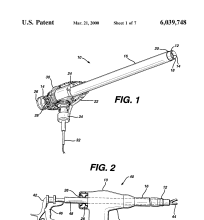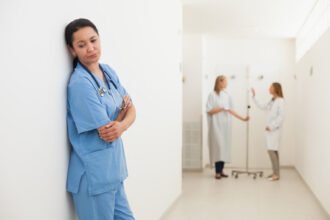The Lancet in its latest edition has another “paradigm-shifting” study (its words) on whether invasive cardiologists should use bare metal or drug-eluting stents in people with coronary blockages. For those not following this issue, the medical literature has been bouncing like a yo-yo on the question of which stents — drug-eluting or bare-metal — are better at preventing thrombosis or blood clots that can form around the stents, which sometimes lead to heart attacks and require repeat operations.
The Lancet in its latest edition has another “paradigm-shifting” study (its words) on whether invasive cardiologists should use bare metal or drug-eluting stents in people with coronary blockages. For those not following this issue, the medical literature has been bouncing like a yo-yo on the question of which stents — drug-eluting or bare-metal — are better at preventing thrombosis or blood clots that can form around the stents, which sometimes lead to heart attacks and require repeat operations.
The researchers, mostly European but led by Gregg Stone of the Cardiovascular Research Foundation at Columbia University, looked at the results of 49 trials in over 50,000 patients who were given four different types of drug-eluting or bare-metal stents. One particular brand of drug-eluting stent — the cobalt-chromium everolimus eluting stents produced by Abbott Labs — reduced stent thrombosis within 30 days after the operation by anywhere from 14 to 41 percent compared to the other options. “If confirmed in future randomized trials, (the findings) represents a paradigm shift,” Stone, a consultant to Abbott and other stent manufacturers, and the other authors noted in their conclusion.
Sound pretty impressive, right? But how often does this problem happen to people with heart disease who get stents? According to a 2005 study that looked at drug-eluting and bare-metal stents, the incidence of thrombosis in either group was somewhere between 1.3 and 1.7 percent. Or, to put it another way, it affects between 13 and 17 in every 1,000 patients. So a reduction of 14 to 41 percent — the game-changing stats for choosing one brand of stent over another — would be a reduction in thrombosis of 2 to 7 in 1,000 patients.
Compare those benefits to the waste in the entire intervention cardiology system. A study reported last summer in the Journal of the American Medical Association found that an estimated 15 percent of the 600,000 angioplasties done every year, which often result in the insertion of stents, are either inappropriate or their necessity is uncertain. Add on top of that the fact that the COURAGE trial results released in 2007 showed that drug intervention (primarily statins) worked just as well or better than angioplasty in patients with stable coronary artery disease (cost: $1,000 a year or less if generics are used compared to $20,000 for the operation that can lead to stents).
Sadly, a subsequent study showed there had been no change in cardiology practice in the wake of the COURAGE trial. Clearly, the word isn’t getting out that these stents may be unnecessary. A real paradigm shift would be when medical journals like the Lancet stop publishing thinly-disguised marketing studies touting the benefits of one over the other without any perspective on the issue as a whole.
So I don’t end on a downer note, here’s some good news on this subject. The legislature in my home state of Maryland last week passed a bill that will allow for external peer review process to ensure medical necessity for stent placements at local hospitals. The law comes in the wake of a high-profile case of overstenting involving Mark Midei, MD, who was once feted with a pig roast for inserting 30 stents in a day at St. Joseph Medical Center in Towson, Md. Many of them were later found to be unnecessary. The bill, which now goes Gov. Martin O’Malley for signing, also mandates a certificate of need for new facilities that can perform invasive cardiology procedures.







